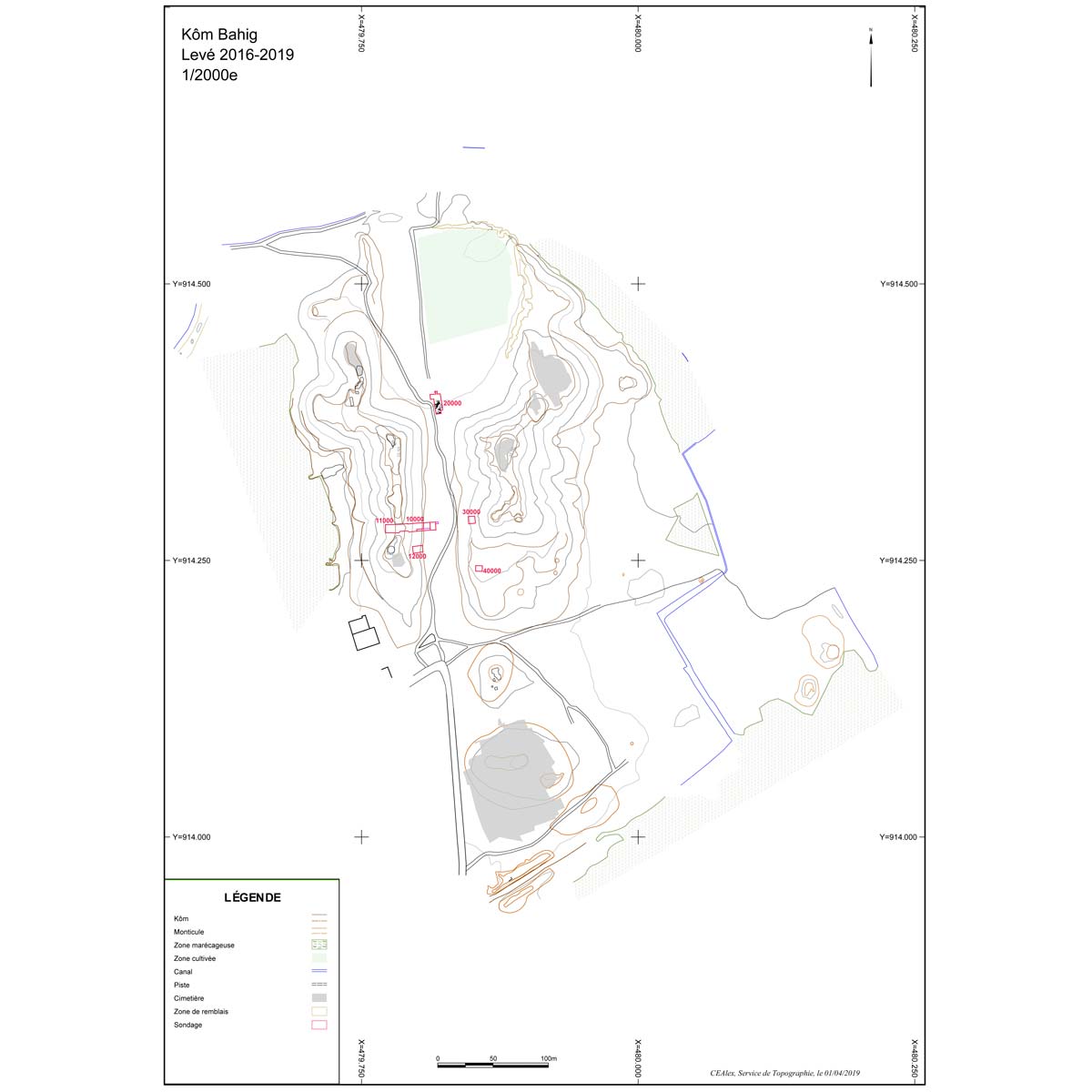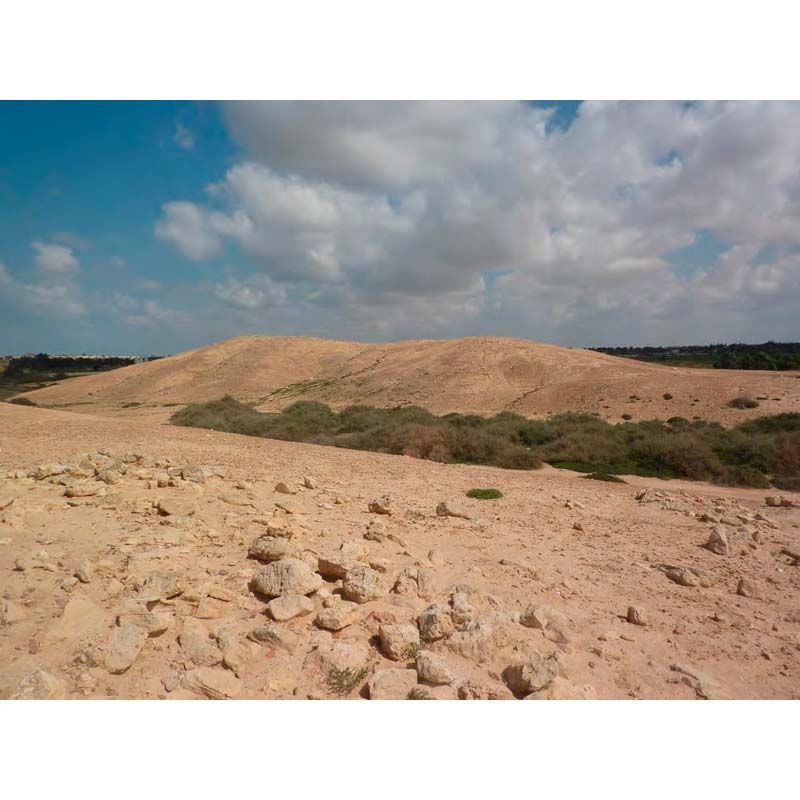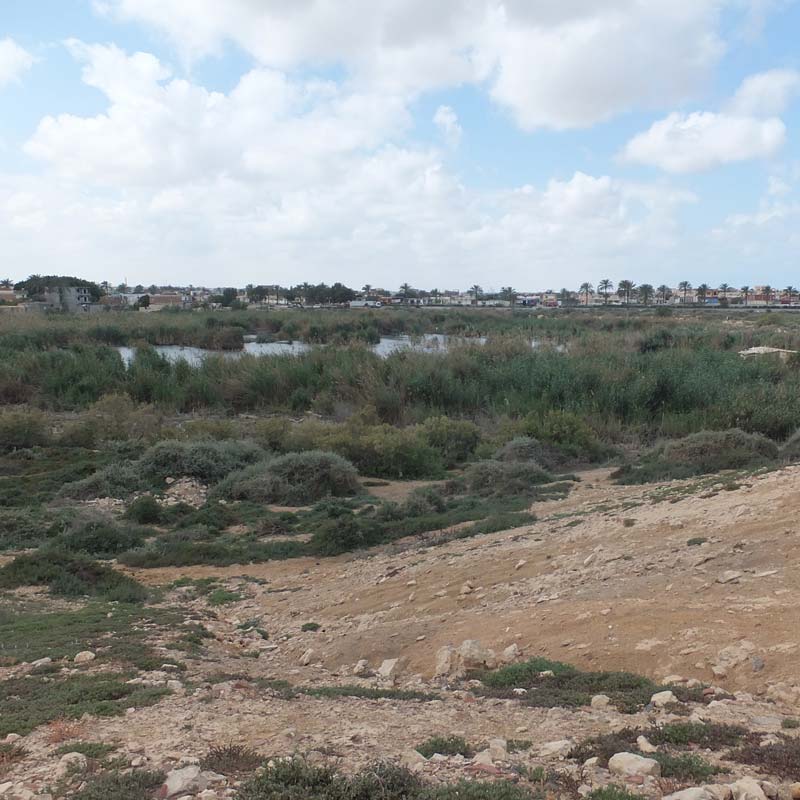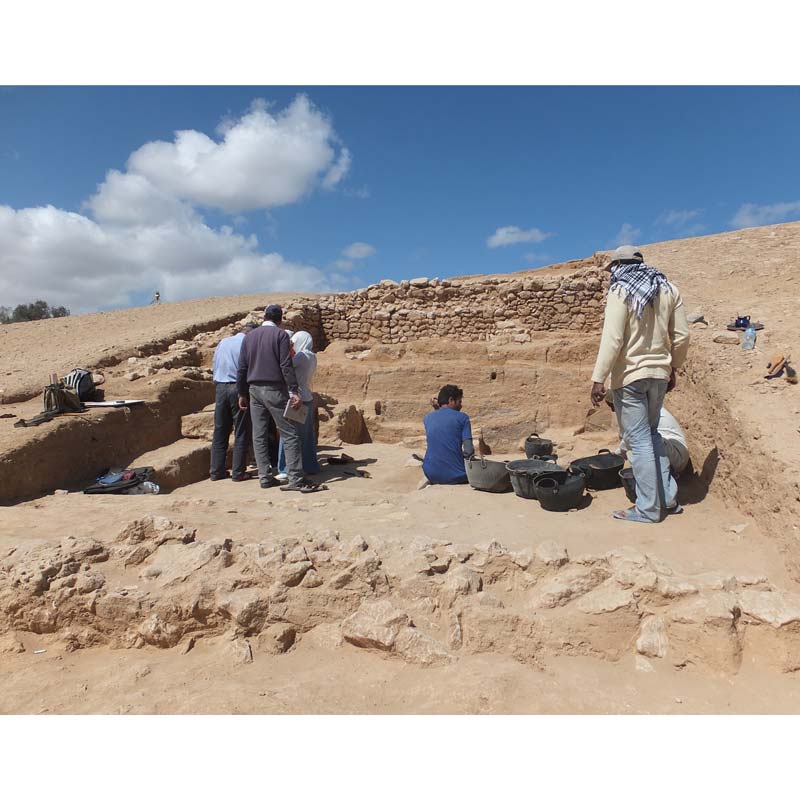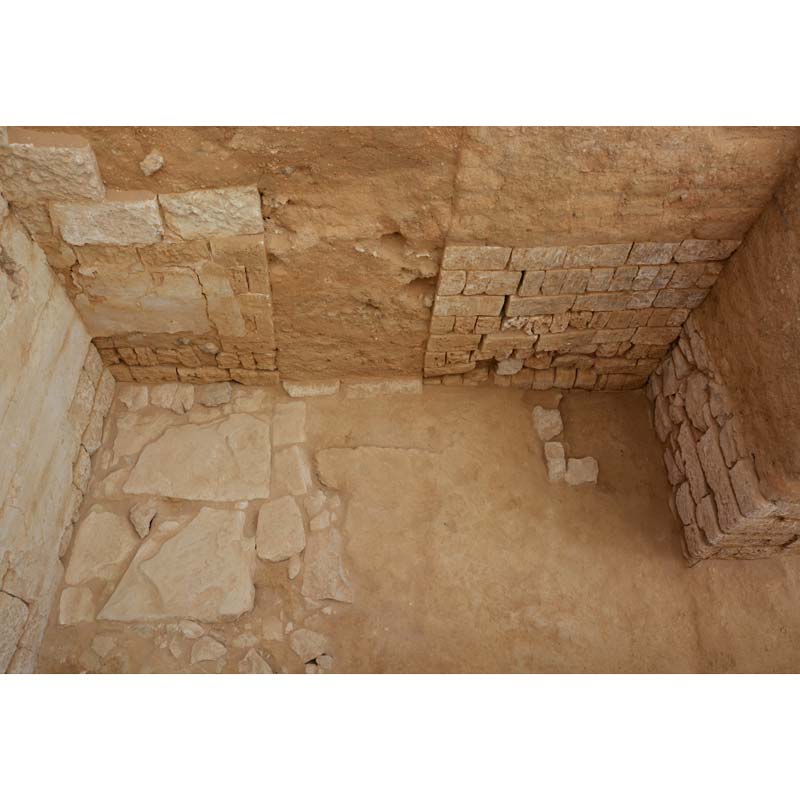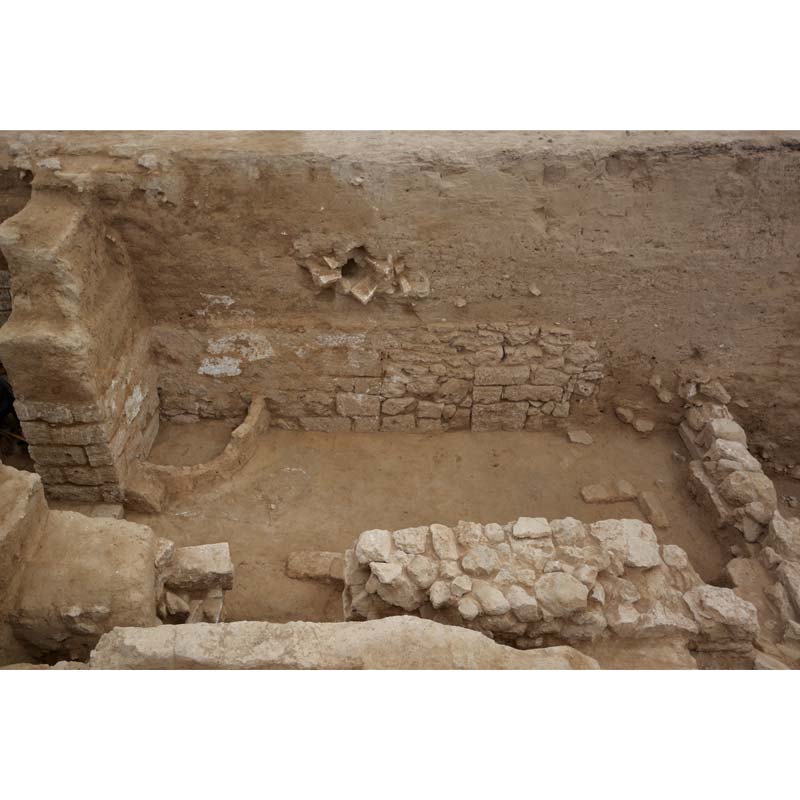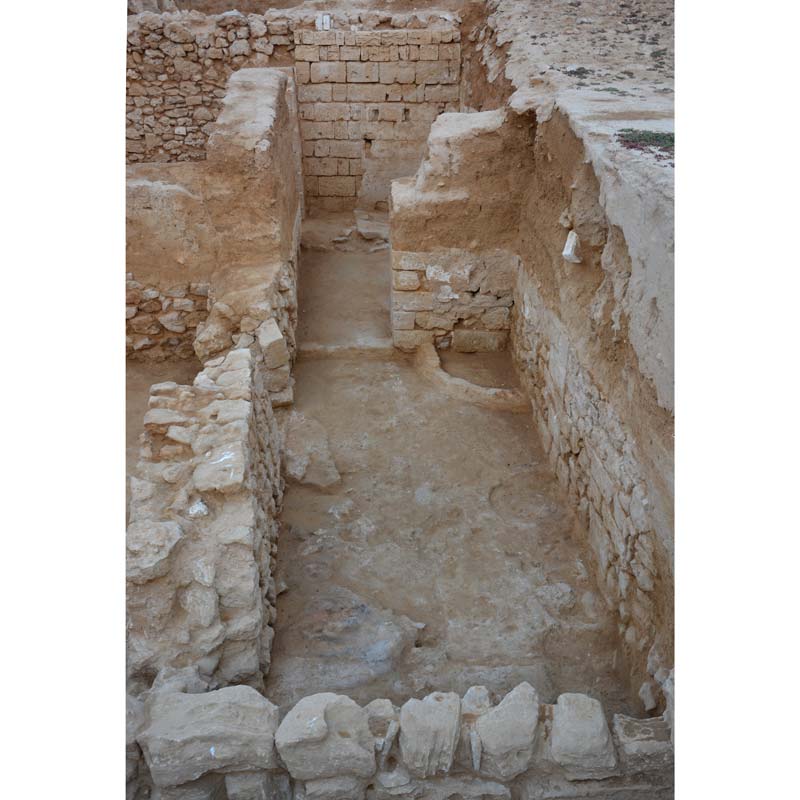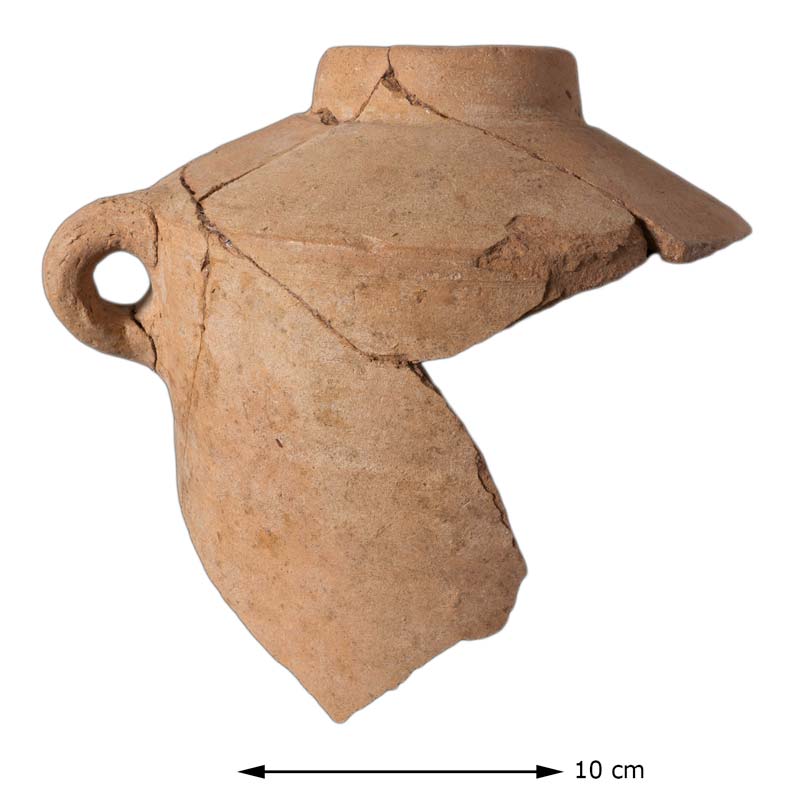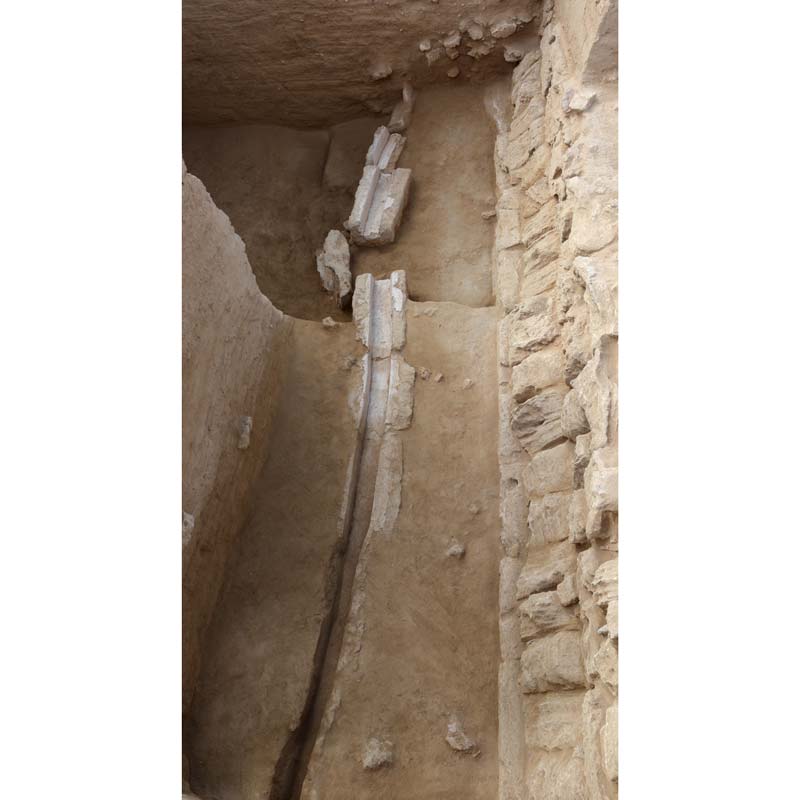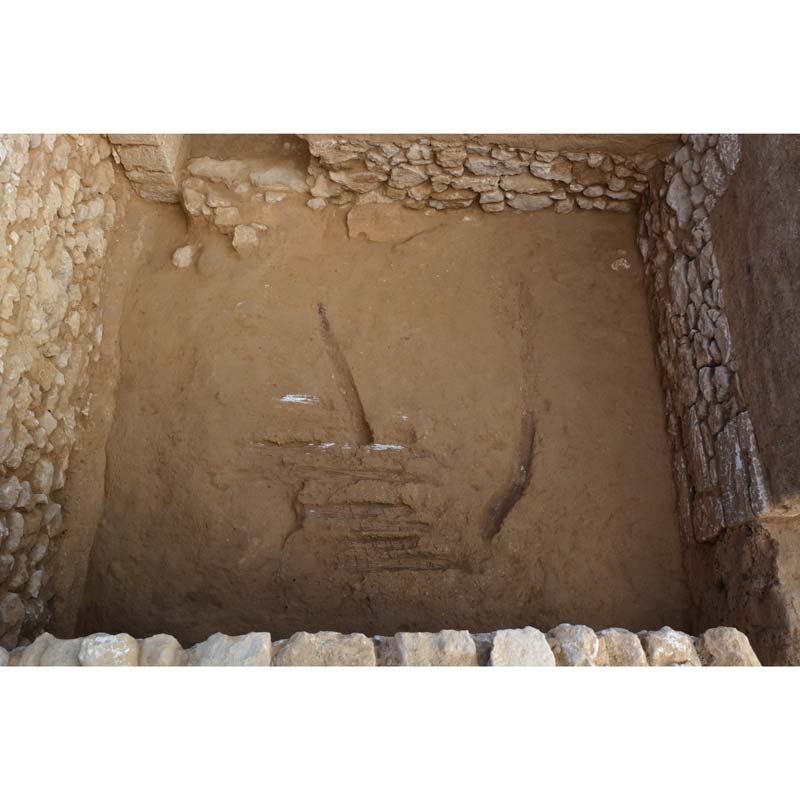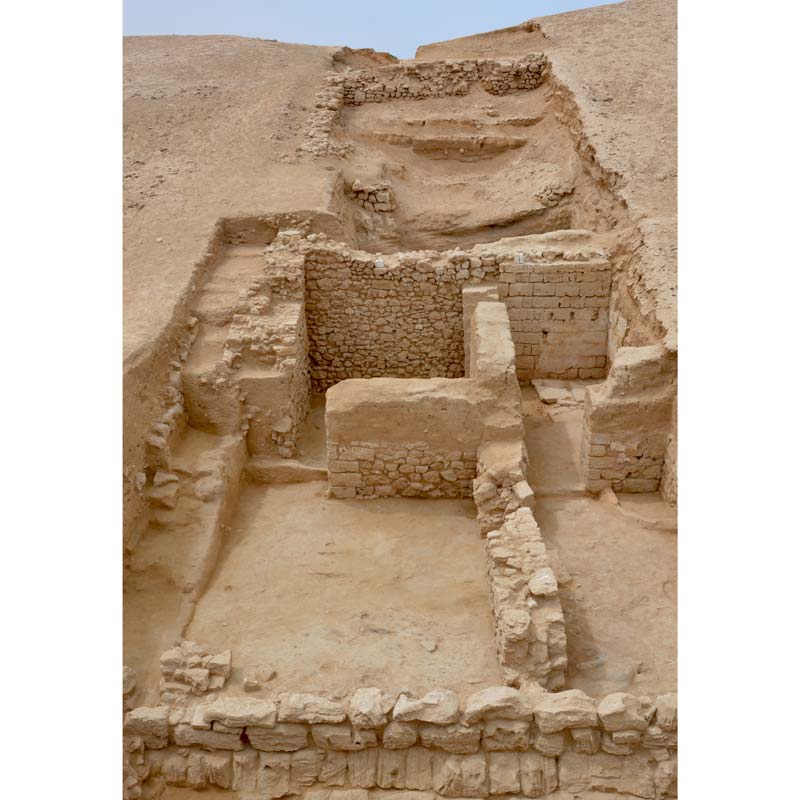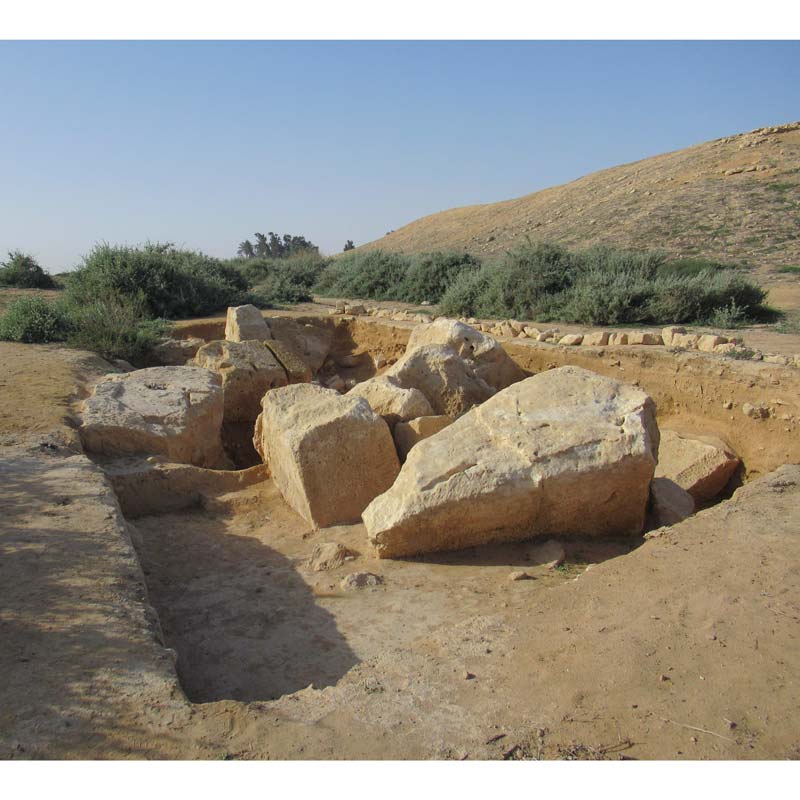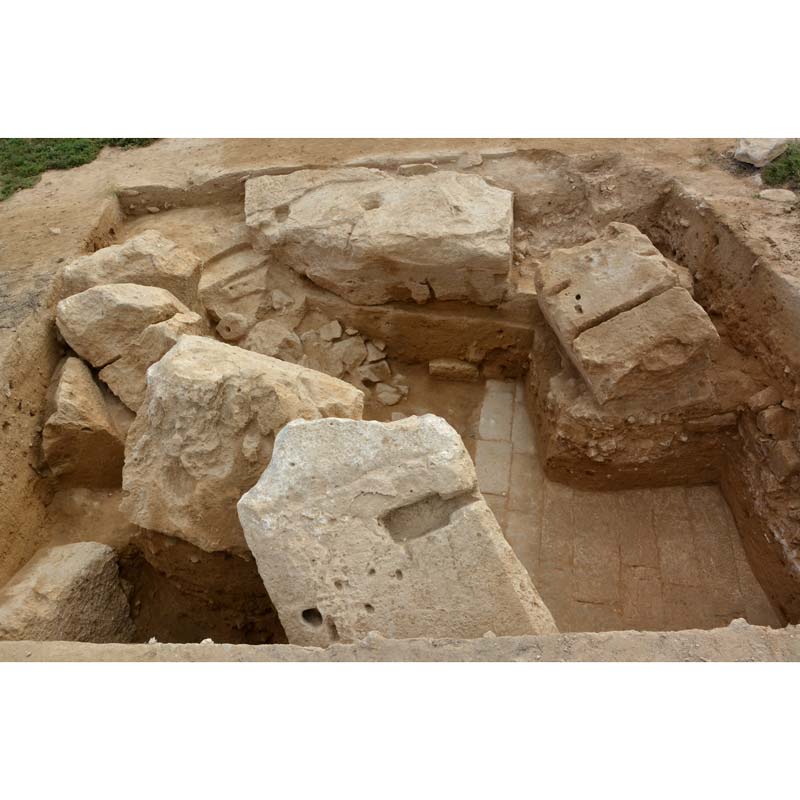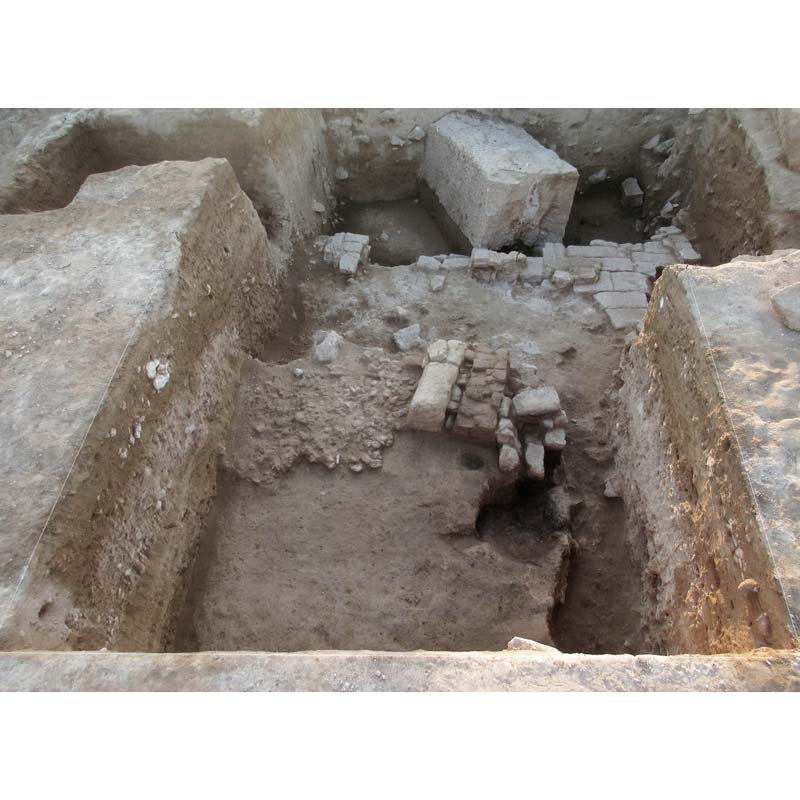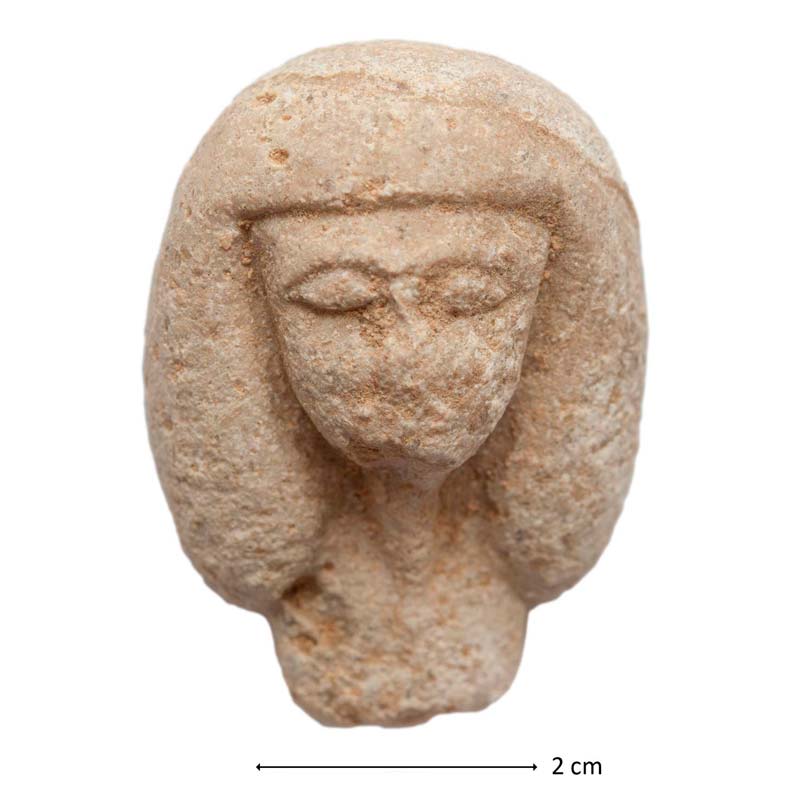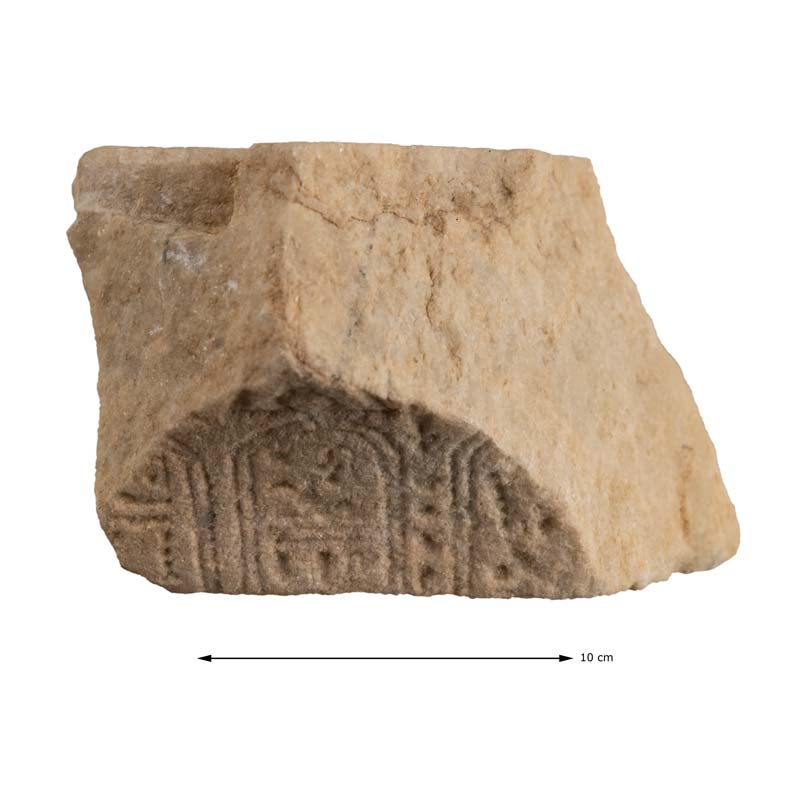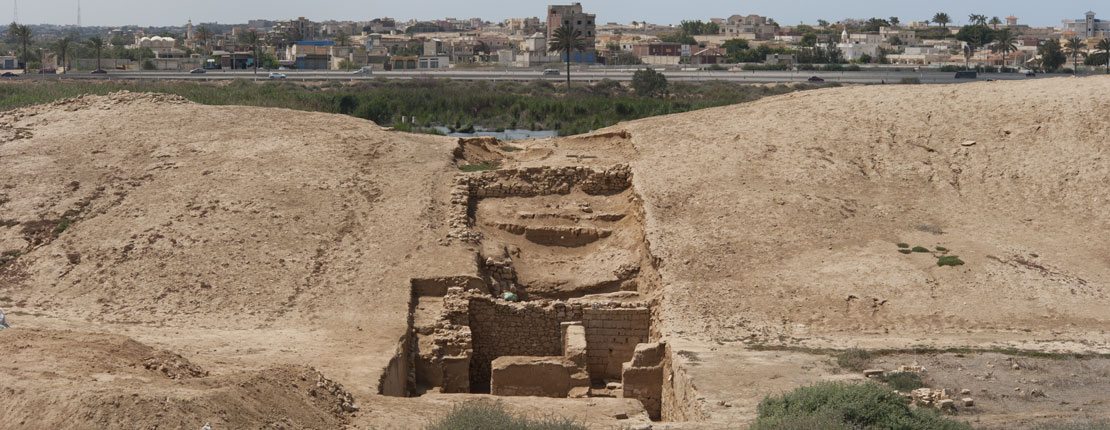
Kom Bahig
Team leader : Aude Simony
The Kom Bahig site is located some 50 km west of Alexandria, to the south of the Pleistocene ridge (III) of Gebel Mariout, about 1 km from the southern shore of Lake Mariout and to the north-west of the modern village of Bahig. The site is spread over an area of almost 17 hectares and site consists of two large, elongated man-made hills, oriented north-south and separated by a central “valley”. The site is bordered by farmland to the north, a marshy area to the west and a village and scattered small koms to the south.
The CEAlex has been excavating this site for two months every year since 2016. To date, work has focused on two main areas. The first, located in the southern part of the western kom, has revealed the remains of several buildings with thick mud-brick walls, as well as a large building with limestone walls dating from the Ptolemaic era, but whose occupation fill dates back to the 7th century BC. Excavations in the second area, located in the northern part of the central valley, have uncovered large limestone blocks on the surface and several sections of a dromos-type paved walkway. These features probably represent the remains of an ancient sanctuary that remained active until the end of the Ptolemaic Period.

